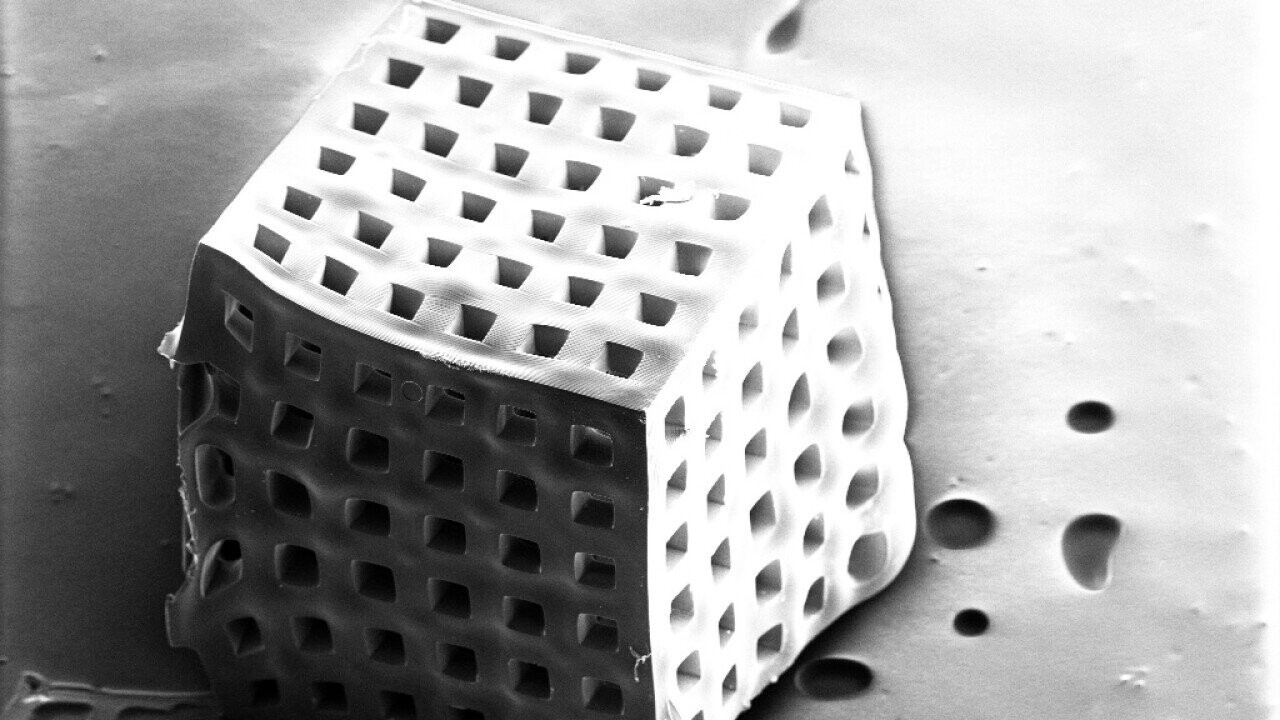At the Karlsruhe Institute of Technology (KIT), Dr. Monsur Islam create carbon structures to create various scaffolds for cell tissue growth. For this purpose, a glass-like carbon material is used, which is created by carbonizing a 3D-printed blank.
For this, Dr. Islam uses a high-resolution 3D printer that works at the right scale and with a material that is suitable for carbonization.
After various attempts, he came across the microArch® S130 from Boston Micro Fabrication (BMF), which offers a resolution of 2 µm. The printer was able to print the more complex internal structures of the scaffolds with tight tolerances and high resolution using BMF's HTL resin. The 3D-printed preliminary products then carbonized without any problems. The resolution and scale of BMF's 3D printer reached the values necessary for successful 3D cell seeding.
A cube with edge dimensions of 1.3 x 1.3 x 1.3 millimeters and 100 x 100 μm tunnels spaced 100 μm apart in layers of 5 μm was printed with the microArch S130. After carbonization, the scaffolds were tested in cell cultivation and tissue development. Now the structure design evolved.
“Carbon is an interesting material with unique properties. Manufacturing complex 3D structures from carbon is challenging. Additive manufacturing enables the production of complex 3D structures from a variety of polymer materials. Carbonization of 3D printed polymer material can result in 3D structures made of carbon. With BMF's micro-precision 3D printing systems, we will fabricate more carbon architectures to study the structural and material properties.”
Dr. Monsur Islam, KIT
